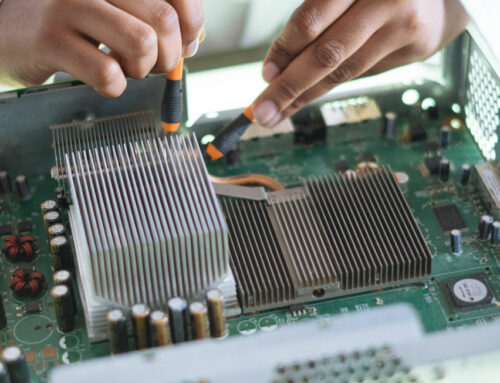Hopefully, you’ve built your network to be fast, reliable, and secure. But even the best-laid plans can fall apart. Especially when dealing with natural disasters, power outages, or when the landscaper accidentally cuts through your fiber optic cable. In this post, we’ll cover ways to build in redundancy and failovers for when things go wrong.
For help and advice on building a secure and dependable network, check out our posts on Designing Your Network Backbone, Network Security and Tools for Monitoring Network Health.
Building In Redundancy
When you’re designing your network or updating it to increase reliability, one thing you should build into everything is redundancy. Redundancy is the installation of additional or alternate network devices, communication mediums or equipment in your infrastructure. By providing additional or alternate equipment, or planning alternate network paths, you ensure availability in the case of device or path failure. Building in redundancy gives you a network failover to avoid an extended outage (AKA, disaster recovery).
There are some best practices around building in redundancy and network failover:
- Make your network fully redundant. This includes switches, network devices and equipment, an alternate Internet source, phone and VOIP backups, and alternate power sources.
- Don’t make it overly complicated! A complicated network failover plan or network architecture is likely to have issues — and issues that are harder to diagnose.
- Keep parts on-hand or easy to get. In the case of hardware failure, determine if you want to keep spare parts on site or document where and how to get spare parts quickly when you need them.
Determine Your Failover Approach
There are three ways to plan for a network hardware failover; cold standby, warm standby, and hot standby.
- Cold Standby: A non-automated failover that requires personnel to manually approve the failover.
- Warm Standby: An automated failover where a backup system runs in the background and data is synchronized to it. Some transactions may fail while the background system takes over. But after a brief outage (about the length of a system reboot), the network will be back up.
- Hot Standby: A fully automated failover where the system and backup systems are fully synchronized and run in parallel. This method requires 100% mirroring and client access to multiple servers at any given time.
Depending on your business and how dependent you are on your network, you may choose one or more than one of these methods. For example, in a mission-critical or datacenter situation, hot standby will protect from any downtime.
Avoid Downtime During Power Outages
For datacenters or in-office server rooms, power outages can derail even a well-planned, redundant network. Installing a commercial grade generator that can provide power to critical servers and systems.
In the days of landlines, power outages wouldn’t affect phone service. However, VOIP requires a power source, so if the power goes out, so do your phones. Have an alternate power source that can power your phones or use batteries to keep phones powered in an emergency.
When deciding on a backup power solution, look at your current network and business needs and plan for growth. This is an investment that you will want to protect your business for years to come.
VOIP Backup Options to Keep Calls Coming In
In the case of a network outage, VOIP phones will also be rendered useless. When you’re choosing a VOIP provider, ask about their backup plans for a power outage, network downtime or loss of internet connection.
There are a few options for VOIP backup, the most common is mobile-ready VOIP. This option will automatically send calls from your VOIP phone to your designated mobile device to ensure call continuity.
Another option is to have a backup internet service provider (ISP) that can be used when the network running the VOIP phones goes down. This may be a failover plan that moves VOIP traffic to the same network that the computers are on (if that’s still operational) or having a separate backup ISP to provide connectivity in the event your primary ISP fails.
You may also want to plan for a redundant connection to between your phone network and internet cable. A single point of connection could be damaged or inadvertently cut, so having a second point of connection serves as a backup.
Rely on 4G for WAN Backup
While before WAN backup solutions were dependent on ISDN or DSL connections, 4G networks have stepped in as a viable and faster alternative.
There are several ways to use 4G as a WAN backup, some may be more practical for your business than others.
- 4G LTE Wireless Internet Connection: You can have it installed by a mobile service provider. It’s fast and affordable.
- USB Dongle or Modem: These portable dongles or modems fit in a USB port to provide internet connection.
- Ethernet Gateway: A WWAN modem connected through an Ethernet interface on a router.
As you’re planning for 4G WAN backup, keep in mind that 5G is coming. Ask your service provider how you can best plan for an eventual upgrade 5G.
Hope for the Best, Plan for the Worst
Planning for an emergency and considering the many ways a network or power outage could affect your business may not be for the optimist. But having a plan in place is essential. Building redundancy into your network and having a network failover plan should help you avoid downtime that could cost your business productivity and money.




